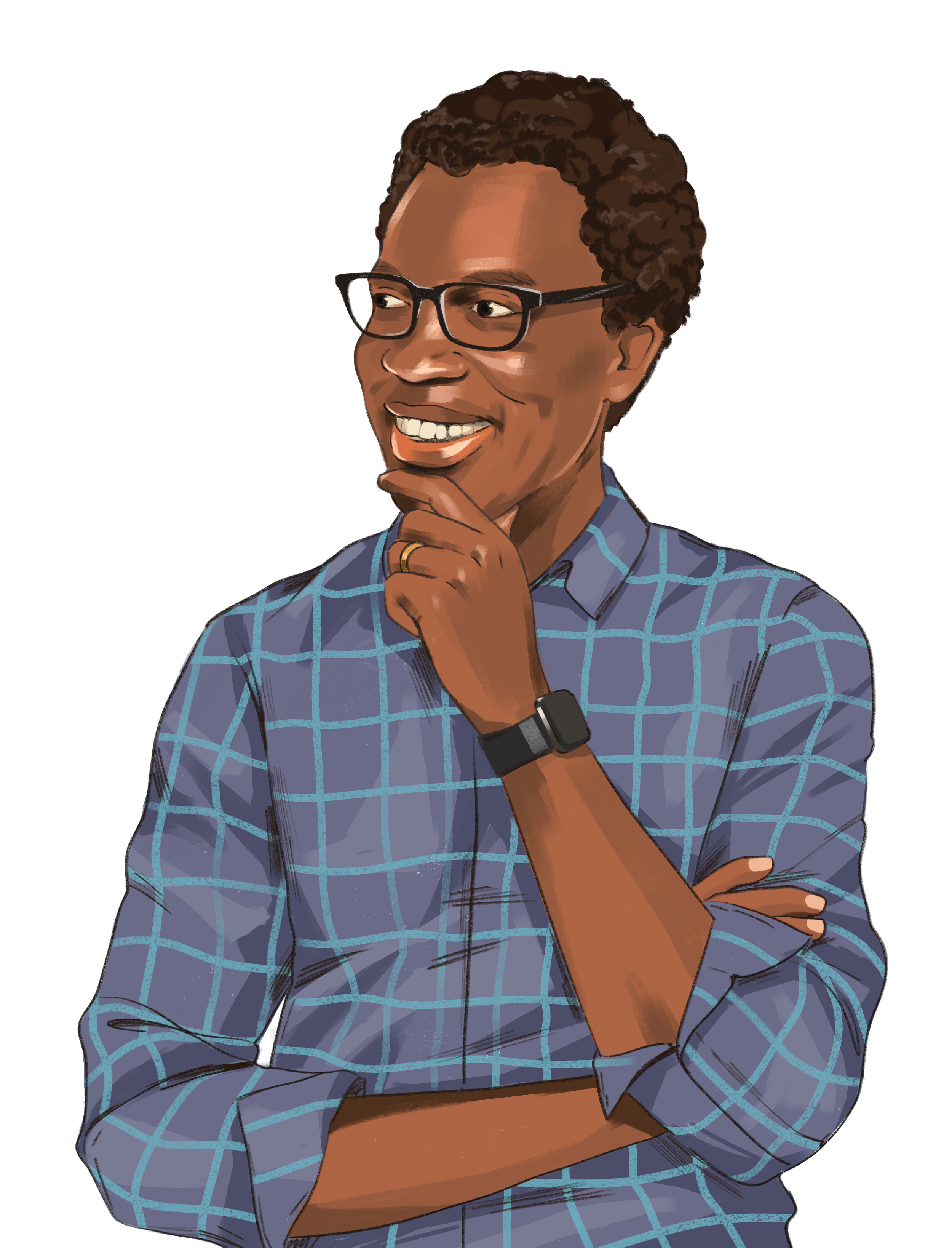
Section Styles spotlight-header
I am a
Computational biologist
Geoffrey Siwo, PhD
Presented by
Superhuman Body + IF/THENIN MY LAB, WE CREATE AND LEVERAGE INNOVATIVE TOOLS TO ACCELERATE HOW LIFE SAVING MEDICINES ARE DEVELOPED.
As a Computational Biologist, I leverage the power of computers and community to make technology and medicine more accessible to everyone.
MY WORK SETTING
Indoor vs. Outdoor
I spend most of my time working inside at a desk.
People vs. Alone
I spend most of my time collaborating with other people.
Creative vs. Defined
Most of my work is creative, while I have some structure to each day.
-
I use computers and artificial intelligence (AI) to rapidly increase how quickly we can discover and develop new medicines. I use technology to create new approaches that many different scientists can use in their own research to do things like look at medical data in fresh ways or predict who is likely to get sick in different populations. Some of my research focuses on ensuring that this work is done inclusively and equitably, meaning a wide range of populations are fairly represented throughout the process. I also find ways to make these tools as inexpensive and easy-to-use as possible, so that people all over the world who may not have access to lab equipment can participate in and enhance the process of discovery.
-
I use and further develop cutting-edge tools like AI and machine learning, and apply these techniques to biological questions and data. I write code in programming languages such as R and Python and produce new programs or techniques that other people can use as well. I also partner closely with collaborators in different disciplines like medicine, engineering, pharmacology, and chemistry, to bridge gaps and find ways to improve our processes. I sometimes collaborate with communities or analyze techniques to ensure that the technologies we’re using are fair – for example, studying ways to ensure that genetic datasets include a wide range of diverse ethnicities.
-
Understanding diseases and developing new medicines to treat them has historically been an extremely slow, expensive, and difficult process that has been led by relatively few people. By using new technologies to make that process faster, easier, and available to a much wider range of scientists across fields, we can massively increase the rate of life-saving discoveries. And by finding ways to prioritize diverse data sets, support inclusive leadership, and unlock these technologies by sharing them broadly with people across the globe, we can invite and uplift new perspectives that could benefit everyone.
MY WORK NEEDSEssential Skills:
COLLABORATION
To do my job well, I need to listen to insights from other experts and fields, as well as the communities we partner with.
AUDACITY
It takes boldness to question the status quo and try new approaches that you believe in.
OPENNESS
Being open to new ideas and different ways of thinking — from scientists and non-scientists too – helps me discover unexpected ways to solve tricky biological problems.
PATIENCE
Working with code can be a tedious process that requires a lot of time, debugging, and problem solving.
DAYS IN THE LIFE
Days in the Life
Come along and explore what three days at my job might look like!
How I Work
Check out what my place of work looks like on an average day.
This is what my workspace looks like!
Multiple tabs on my browser. On a typical day, I work on my laptop with multiple browser windows open. This allows me to analyze data and catch up on emails.
Travel coffee mug. My favorite travel coffee mug sits on my desk. I like drinking coffee from it.
Zoom app. I usually have a couple Zoom meetings everyday with students or collaborators around the world.
Technology books. I have a collection of books specifically about technology, environmental health, artificial intelligence, and the future humanity of the cell.

Did you know...Technology often reflects the biases of its creators.
It’s not always intentional, but the creators of new technology inevitably make critical design decisions, like what to prioritize in their algorithms and what to include in the data they use to train their AI models. All of these choices can end up influencing the final product or technique’s behavior. For example, early facial recognition technology often struggled to recognize people with darker skin, particularly Black women. This is particularly important when we think about how we can use AI to tackle health problems. What diseases will be prioritized? What populations will make up the majority of the data we use to understand and find ways to treat the disease? Who will benefit, and who will choose who will benefit?
I’m involved in a project that uses AI models to help community health workers make better decisions. A big part of this project is making sure the AI models we use reflect the communities being served. We do this by making sure that local data, and not just general data, is incorporated into our models. This step is crucial because every AI model comes with biases influenced by the data it was trained on.
Technology has a lot of potential to help humans solve problems in healthcare, but it also has the potential to reinforce the limitations and shortcomings of our current systems. By making sure the people creating – and using – these technologies understand their risks, history, and potential biases, we have a better chance of making sure everyone gets the benefits.
Rewarding
These are the parts of my job I find particularly rewarding.
Meeting and collaborating with new people.
Technology moves very fast so there’s lots of new things to study.
But everyone is different! Drag the circles to place them where you rate them.
Challenging
These are the parts of my job I find particularly challenging.
New work tasks are chances to grow your skills, but having too many at the same time can feel like a lot to handle.
Making new discoveries can be really exciting but also really hard work.
Section Styles movable
These are the people I work with:
Clinicians
I work with medical doctors to understand the direct impact of my research on clinical care and medical research.
Multidisciplinary Experts
I work with researchers across fields like chemistry, medicine, and engineering to create tools that support a wide range of applications.
Mathematicians
There are many different types of AI, and it’s advancing quickly. This type of research requires collaboration across a range of experts who specialize in math and data.
WHAT’S NEXT?
What’s next for my field of work?One of the most exciting things about working in STEM is how fast things change. Things that aren't possible today could be possible tomorrow.
Cloud Labs & AI Co-Scientists.
Several technologies are currently advancing that, when combined, have the potential to completely change the way we make discoveries. First, AI may soon be able to work side-by-side with human scientists (a sort of “AI co-scientist”). At the same time, cloud-based laboratories could make it possible to create virtual labs where a variety of laboratory equipment can be remotely controlled via the internet to perform scientific research.
This means people anywhere could use AI co-scientists to generate hypotheses, test them by sending instructions to robots to perform experiments in Cloud Labs, and analyze the results. It could open up science to anyone who is curious and has an internet connection. It could also make it easier to include diverse perspectives in scientific research and accelerate the translation of biomedical discoveries into medicines, vaccines, diagnostics and wellness approaches that benefit all. It sounds very sci-fi — but it’s not as far off as you may think!
Looking for teacher resources?
PHOTOGRAPHER: Erick Forester • Illustrator: Ekaterina Kuleva© 2024 THE PLENARY, CO. ALL RIGHTS RESERVED. TERMS. PRIVACY.This is a brand new site! See an issue? Let us know.















